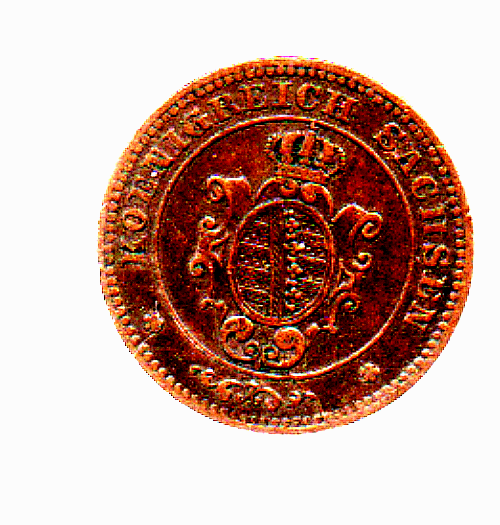-40%
1697, Hohenlohe-Neuenstein, Wolfgang Julius. Gold Ducat Coin. (3.42gm!) NGC AU+
$ 982.42
- Description
- Size Guide
Description
CoinWorldTV1697, Hohenlohe-Neuenstein, Wolfgang Julius. Gold Ducat Coin. (3.42gm!) NGC AU+
Mint Year: 1697
Denomination: Ducat
Mint Place: Nurnberg
State: Hohenlohe-Neuenstein-Neuenstein
Condition:
Certified and graded by NGC as AU (Details: Mounted!)
References: Friedberg 1336, Erlanger 2090, KM-32 (
00 in XF!
).
Weight: 3.42gm
Material: Gold!
Obverse:
Armored bust of Wolfgang Julius, Count of Hohenlohe-Neuenstein right, holding coat-of-arms of Hohenlohe-Neuenstein in right hand. Mint master´s iniitals (GFN) below.
Legend: H . V . G . H . Z . L . V . C . G . F . M . O . V . R . - WOLFGANG9 IVLI9 G . V .
Reverse:
Equestrian armored figure of the Count, holding sword in right hand and leping above three figures, one of which has a cross-topped orb in his lap. Landscape in background.
Legend: SO FAHRT EIN RECHT EDLER SINN . VBER ALLES WIDRIGES HINN . 1697 .
Translated: "
This is how a righteous mind rides over all adverse. 1697.
"
The
House of Hohenlohe
is a German princely dynasty. It ruled an immediate territory within the Holy Roman Empire which was divided between several branches. The Hohenlohes became imperial counts in 1450. The county was divided numerous times and split into several principalities in the 18th century. In 1806 the Princes of Hohenlohe lost their independence through mediatisation initialized by Napoleon, and their lands became parts of the kingdoms of Bavaria and of Württemberg by the Act of the Confederation of the Rhine (12 July 1806), a confederation of client states of the First French Empire. In 1806 the area of Hohenlohe was 1,760 km² and its estimated population was 108,000. Having lost their Imperial immediacy, the Princes of Hohenlohe still kept their private possessions. Until the German Revolution of 1918–19, just as other mediatized families, they also retained important political privileges. They were considered equal by birth (Ebenbürtigkeit) to the European sovereign houses. In Bavaria, Prussia and Württemberg the Princes of Hohenlohe received hereditary seats in the Houses of Lords. In 1825 the German Confederation recognized the right of all members of the house to be styled Serene Highness (Durchlaucht), with the title Fürst for the heads of its branches, and princes/princesses for the other members.
Authenticity unconditionally guaranteed.
Bid with confidence!
Wolfgang Julius of Hohenlohe-Neuenstein
(3 August 1622, Neuenstein – 26 December 1698) was a German Field Marshal and the last Count of Hohenlohe-Neuenstein. He was the son of Kraft III of Hohenlohe-Neuenstein (14 November 1582, Langenburg - 11 September 1641, Regensburg) and Sophie of Birkenfeld (29 March 1593, Ansbach - 16 November 1676, Neuenstein), a daughter of Charles I, Count Palatine of Zweibrücken-Birkenfeld.
During the Thirty Years' War the Hohenlohe Family had fled to Ohrdruf. In 1637, when he was 15 years old, Wolfgang Julius was stopped by a patrol and wounded in the face through a glancing shot. In 1643 he went on his Grand Tour to France. To earn money, he entered the regiment of the Imperial Marshal Josias Rantzau, where he was involved in a cabal, which earned him seven months imprisonment.
He returned home in 1657. There he became lieutenant-general of the troops of the League of the Rhine, which were set up to defend against the Turks in the Balkans. Wolfgang Julius was stationed in Styria. From 1664, he fought in Hungary and Croatia. He distinguished himself at the sieges of Pécs and Novi Zrin Castle which failed because the army was not unanimous. After the successful Battle of Mogersdorf he became field marshal, and returned to Hohenlohe with 800 men from the original 6500.
He bought the lordship of Wilhermsdorf, near Nuremberg, and retired there. Since both his marriages were childless, his inheritance passed to his brother, John Frederick I of Hohenlohe-Oehringen.
He married twice. On 25 August 1666 he married Sophie Eleanor of Holstein-Sonderburg-Plön (1 August 1644, Plön - 22 January 1689, Neuenstein), daughter of Joachim Ernest, Duke of Schleswig-Holstein-Sonderburg-Plön (1622–1671).
After her death he married on 4 September 1689 in Wilhermsdorf Countess Barbara Franziska of Welz-Wilmersdorf (4 August 1666 - 3 April 1718, Wilhermsdorf).
Only 1$ shipping on each additional item purchased!











